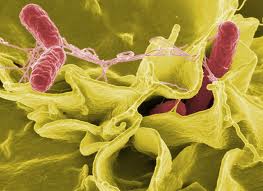As we approach Labor Day, it’s rather fitting to reach our next milestone in our film production. We completed the script, gathered all our digital assets and started piecing this ambitious film together. Since we decided to make this film available in French, Spanish and Chinese (both traditional and simplified), we are engaging multilingual translators from all over the world. I must say – there’s a lot to know about the subtleties of each particular language. If that’s not enough, we have thirty-six people in the film in the present version. How the heck can we locate all the different people to provide the voiceovers? Maybe we could find a mighty talented ventriloquist who is also multilingual…
 It’s apropos that this film will be localized in different languages, since we now know that microbes from many different kingdoms can communicate with one another to form chronic bacterial infections – biofilms. How do these tiny, capable creatures “do it” so efficiently? Is there a lingua franca?
It’s apropos that this film will be localized in different languages, since we now know that microbes from many different kingdoms can communicate with one another to form chronic bacterial infections – biofilms. How do these tiny, capable creatures “do it” so efficiently? Is there a lingua franca?
In the past few decades, researchers intensively researched quorum sensing. Another feature of microbial communications involves the “exchange of mobile genetic elements,” an especially vital aspect of evolution within biofilm communities. We touch upon this biology in the film, but I see why researchers are concerned about this superlative survival trait: it enables horizontal gene transfer between vastly different bacterial species and even across different “kingdoms.” And why does this matter?
It’s simple: many chronic infections include myriad bacterial species and frequently different non-bacterial species. As innovators, researchers and diagnosticians dig into all the different life forms of a chronic infection, they are finding “everything” in these living communities (samples from organs, wounds, dental, sinus, etc.) including the kitchen sink. Well, maybe not that, but the kitchen often plays a role in disease transmission.
non-bacterial species. As innovators, researchers and diagnosticians dig into all the different life forms of a chronic infection, they are finding “everything” in these living communities (samples from organs, wounds, dental, sinus, etc.) including the kitchen sink. Well, maybe not that, but the kitchen often plays a role in disease transmission.
Much more later – some of which will be in the film.
